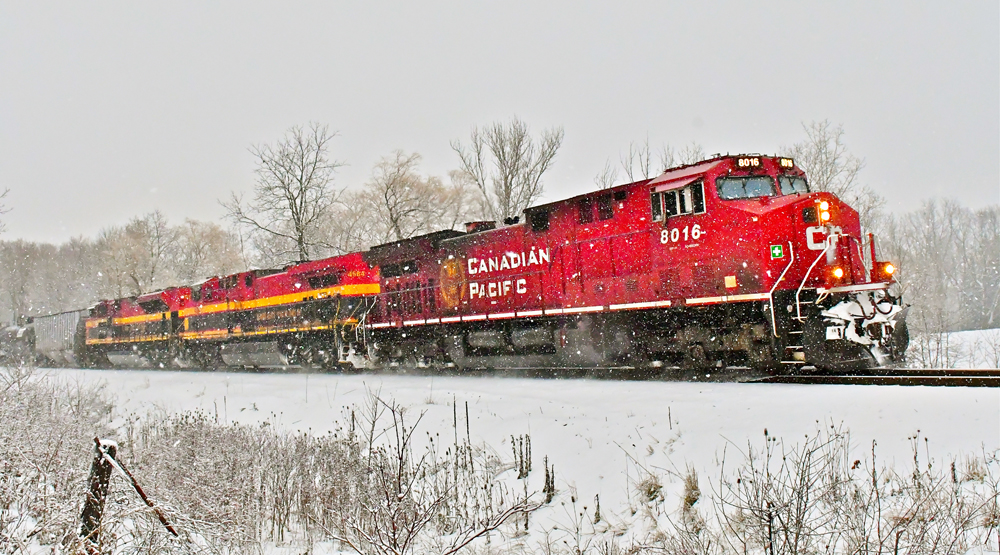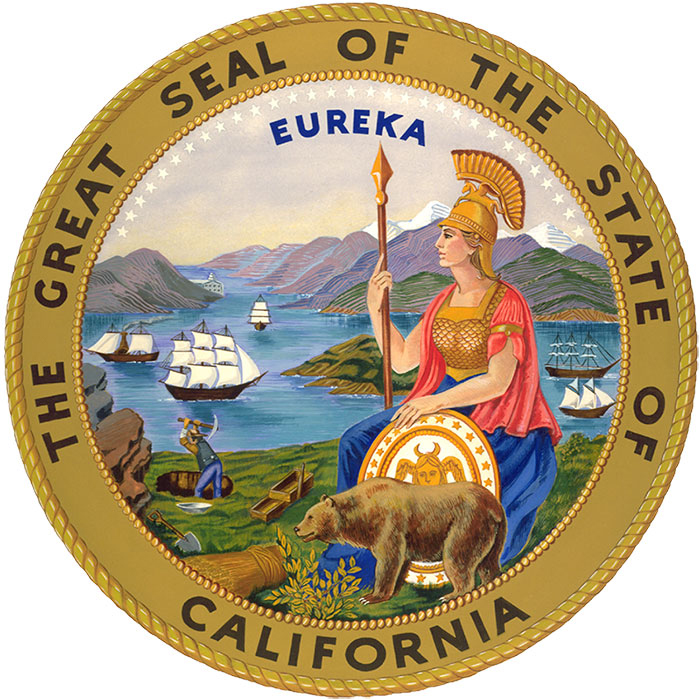
Do railroad mergers live up to the hype? It’s a question that’s been rattling around in my head as federal regulators review the Canadian Pacific-Kansas City Southern merger, the first between Class I railroads in two decades.
First, the projections. Within three years of the merger, Canadian Pacific Kansas City expects to gain 80,000 carloads and 137,000 intermodal containers currently handled by competing railroads. New intermodal service – the first connecting the CP and KCS networks – will take 64,000 trucks off highways annually. And by pairing origins on one railway with destinations on the other, the expanded CPKC system will be able to gain new traffic across a range of commodities, from grain, chemicals, and forest products to appliances, auto parts, and finished vehicles.
Now, the key question: How did prior Class I mergers play out from a traffic growth perspective? To find out, I looked at the gross ton-miles, or GTMs, for merging railroads for the first full year of their combination and then compared them to GTMs for year four of the merger. (Year four was chosen because of the service issues that followed the mergers of the 1990s, particularly Union Pacific-Southern Pacific and the Conrail carve up.)
Conrail split
CSX Transportation and Norfolk Southern projected that their 1999 split of Conrail would allow them to take nearly a million trucks off highways annually. Instead, after four years CSX’s GTMs declined 2% and NS’s sank 8%.
Union Pacific-Southern Pacific
When Union Pacific acquired Southern Pacific in 1996, executives said the merger would rescue an ailing SP, improve service, and lead to traffic growth. Among the factors that would drive growth: New and shorter routes with single-line service; massive upgrades to SP’s worn out track and locomotives; and capacity expansion projects on both railroads. Four years after the merger – and despite the service meltdown that paralyzed the railroad in 1997-98 – UP’s GTMs were up 9%. And give credit where credit is due: UP completely rebuilt SP as promised.
BN-Santa Fe
Burlington Northern and Santa Fe merged in 1995, saying their bigger, complimentary network would offer shippers more efficient single-line service across the West. Four full years later, BNSF GTMs were up an astonishing 28% from pre-merger levels.
What conclusions can you draw from the four-year GTM changes from these three megamergers? The key takeaway is that if you had good growth prospects before the merger, that would carry through to the bigger railroad. And if you didn’t have strong growth before the merger, well, you wouldn’t have it afterward, either.
The Western railroads benefited from the rising tides of Powder River Basin coal and West Coast international intermodal traffic, and the growth after the BN-Santa Fe and UP-SP mergers reflects both this and the benefits of their expanded systems.
Outside of intermodal, Conrail, CSX, and NS didn’t have strong growth prospects like the Western railroads. And no amount of intermodal growth could offset declining carload business in the Rust Belt areas where Conrail operated. Clearly creating new single-line service linking Conrail-served markets with CSX and NS territory — and introducing rail competition in the Northeast for the first time in two decades — was not a magic formula for traffic growth.
CPKC has growth on its side
Which brings us back to CP and KCS. CPKC will become the first railroad to link Canada, the U.S., and Mexico, and the railroad is betting that single-line service and robust rail-to-rail competition will drum up more traffic.
CPKC readily acknowledges that its route from Chicago and the Midwest to Texas and Mexico is longer and slower than the main lines of rivals UP and BNSF. The railroad’s traffic diversion estimates take this into account.
While a circuitous route counts against CPKC, it does have a necessary ingredient for success: Both railroads are growing.

KCS’s cross-border traffic with Mexico is one of two big pockets of growth in North American railroading. (The other is Canadian National’s route to the Port of Prince Rupert, British Columbia.) Although UP remains KCS de Mexico’s dominant partner at Laredo, KCS’s own cross-border automotive, intermodal, grain, and petroleum products traffic is surging. CP, meanwhile, has been the fastest-growing Class I railroad since Keith Creel became CEO in January 2017.
Also working in CPKC’s favor: Their merger will unite the two smallest Class I systems. That’s an important distinction because they’re scrappier than their larger rivals and therefore likely will continue to work harder to make the most of their combined network.
Yet there’s a cautionary sign in the GTM data. Success immediately after a merger is no guarantee that traffic growth will continue over the long term.
From their 1990s mergers until 2019, the railroads’ change in gross ton-miles stacks up like this:
• CSX, down 16%
• NS, down 1.5%
• UP, down 3%
• BNSF, up 71% (Yes, you read that right: A seventy-one percent increase.)
From a traffic growth standpoint, the Class I merger track record is decidedly mixed, which might make you wonder how much a railroad’s geography determines its destiny.
You can reach Bill Stephens at bybillstephens@gmail.com and follow him on LinkedIn and Twitter @bybillstephens














Very interesting analysis, but not surprising.
Both NS and CSX have failed to attack truck traffic on I-95 and I-85. They have the lowest RR penetration of the major truck corridors in the country.
Under Wick Moorman, NS had a plan to do it, but failed to attract any state support. All that happened was some long outdated intermodal terminals got replaced. No work was done to get the corridor up to economic and physical speed. There are 8 crews needed for 1000 miles on the Crescent corridor versus 4 on the 940 NJ-Chicago route.
Similarly, under Wick Moorman, NS inexplicably invested in doubling Bellevue Yard without getting rid of capacity elsewhere, despite declining carload counts. (Bellevue is in a rotten spot on the NS network, to boot. Hard to get to from the Chicago Line.)
Mr. Ray,
Your comment about the payoffs for mergers pretty much aligns with my experience.
I worked for a Fortune 200 Corporation in a variety of roles, i.e., HR, Accounting, Auditing, and IT. During my stint as a corporate audit director, my team was able to evaluate the outcomes of our acquisitions and mergers. None of them were failures. Likewise, none of them realized the rosy projections of their most enthusiastic proponents.
Several of the acquisitions were defensive. Management bought out several companies that wanted to play in or near our sandbox. Had they been able to do so, they could have been troublesome.
For corporate mergers generally a number of studies have found that only about 30 % add significant value. The other 70 % range from no gain to total disaster. Why corporations are so eager to do big acquisitions is a mystery because the odds are definitely against success. Even Buffett admitted that Berkshire Hathaway way overpaid for buying Precision Castparts, one of his last and biggest purchases.
CPKC is just 1 spring flood from having their 1 line shop broken. And if people think they want an alternative to Long Beach/LA via a Mexican port, Tompolobampo has been around for years with a connection straight to DFW, yet no one wants to fix the burned out bridge at Presidio. So who ever is pushing that line of thought needs to put up more money first.
I meant to say “not even a very good one.
Gross Ton Miles is only one measure of how well a planned merger plays out. It is not ever a very good one. GTM could go up because of poor pricing, i.e., giving the store away, or it could go down because the combined carrier is shedding the losers for more profitable loads.
To Mr. Fullers point, the key question is how well did the owners – stockholders – come out? And that information is to be found in the financials over a minimum of five or more years. I prefer 10 years.
Although it is not politically correct to say so, the long-term objective of a business is to enhance the wealth of the shareholders. To do so management has to take care of numerous stakeholders, i.e., customers, employees, creditors, regulators, etc. At the end of the day, if the shareholders are better off, the merger was a success. It not it was a bad failure.
Paul, you are correct that the point of any business is to make money for its owners. Railroads do this by moving freight, something that’s never tracked after the merger promises are made. Shareholders have done well after each merger and I think an argument could be made that no one would have envisioned just how well investors would do two decades later. The concerning issue, though, is the health of the underlying business. Railroads are making more and more for moving less and less freight. That’s not a trend that continue indefinitely.
It would be interesting to see the number for all railroads to 2010 and then from 2010 to now. To see if BNSF being directly public trading company allowed it more growth under the ownership of Berkshire Hathaway.
That was what I was thinking. How much does BNSF benefit by not having report to shareholders every 3 months? They definitely take the long term approach.
Hi: I’m from Wall Street, representing the investors in these companies.
How about a comparison of revenues and profits? Adjusted for inflation, please.
Ha! We know that story very well, Jack. Investors approved the mergers and enjoyed handsome gains from each transaction. And, as you know, railroads are more profitable now than they ever have been. The more interesting thing to me is the health of the underlying business: moving freight.
Sorry, there’s some flaws in your analysis. For NS, it appears that you are comparing the near-peak economic growth year of 2000 with the lower growth years of 2003 and 2019. Apples and oranges. You need to look at yearly GDP growth stats and the yearly GTM trendline to make valid comparisons. 2000 vs. 2006 for NS yields 409.43 billion GTM’s to 418.785 billion GTM’s, or an increase of 2.28%. Likewise, for the long-term comparison, 2000 vs. 2018 yields 409.43 billion gtm’s to 425.572 billion gtm’s, or an increase of 3.9%. Admittedly these numbers don’t show stellar growth, but your stats indicate that there was no growth at all. That simply isn’t true.
Matthew, I did not mean to make it seem like I was cherry picking the data, thus the same four-year timeframe applied to the three big mergers. But you’re right. There was growth at both CSX and NS between 2000 and 2006, which was the peak year for rail traffic nationally. CSX’s GTMs grew 2.7% over that stretch, while NS’s was up 2.2% as you point out. I chose 2019 as the recent comparison year because it was the last “normal” year before the pandemic turned everything upside down.
I agree with a few small exceptions.
Mergers don’t automatically produce growth, but they can lay the groundwork for future growth beyond what the “original” railroads could do. Take Canadian National for instance. During the 2000s, CN bought a whole host of shortline and regional railroads. Despite this, CN’s traffic during this time was mostly stagnant, mostly due to EHH’s infamously terrible marketing practices. After EHH left in 2009, management then used those acquisitions to fuel CN’s explosive growth over the 2010s.
Original CN, IC, WC, DM&IR, EJ&E, etc alone could not produce the traffic that you see today over their lines. The mergers were needed for that to happen. It took a while (over a decade) but they got their. UP, CSX, and NS could easily do the same thing with SP, and Conrail. They could live up to the projections they promised over 20 years ago. Unfortunately, the management in those railroads aren’t competent enough. (Although CSX with their acquisition of Pan Am and Quality Carriers are turning the other cheek.)
Will CPKC live up to it’s projections? I say yes since Mr. Creel especially has a history of underpromising and overdelivering. There is one aspect of CPKC, however, that I don’t think will live up to it’s hype. CPKC wants to push the Mexican Pacific port of Lorenzo Cardenas as an alternative to the congested port of Long Beach. The problem is the line into Lorenzo Cardenas is susceptible to being blockaded for significant portions of the year. If there is one thing shippers love its reliability, and I’m sorry, factoring this in, I don’t think Lorenzo Cardenas will be the slam dunk CPKC thinks it will be.
Michael, I did pull the GTM data for CN but chose not to include it since its series of mergers didn’t involve Class I railroads. But, oh, the growth: From 2010 to 2015, CN’s traffic in the U.S. was up 25%. Extend the period to 2010-2019 and it’s a 33% gain. Which goes to show you that if a railroad is growing, as CN was in Western Canada (frac sand in, crude oil and energy products out, plus international intermodal) then a merger or mergers will also produce growth.
I read somewhere that Warren Buffet said that a possible danger is that the concession to operate KCS de Mexico was for 50 years. I believe there is 30 years left on that agreement. As a result, Buffet was of the opinion that KCS was too overpriced. If Mexico refuses to renew this agreement how much of a negative impact will it have on CPKC?
Excellent commentary and analysis Bill!
While geography may have contributed to BNSF’s 71% growth, UP with a similar territory went down. The difference in my mind is when BNSF leadership talks about growth, they actually mean it and, more importantly, have figured out how to achieve it.
I do hope that CPKC can achieve significant volume increases and not just at the expense of CN. Assuming the STB approves this merger in the coming year, you’ll need to write a follow up article in 2026/27.
I fully concur w Bill’s methodology and comments. In Conrail, the rust belt was dying, the geogrphy served was atrophying, and Levan himself said the only way out for Conrail was a merger — ergo the Cotton Belt attempt.
UP/SP nearly shot itself in the foot thanks to Omahas’s arrogance — see Frailey’s piece on the Houston fiasco. BNSF succeed because Krebs said we’re one railroad and that’s the way we’re going to manage the property.
CPKCS will succeed because of the market characteristics Bill cites and because of the Ottensmeyer/Creel leadership styles plus a strong pipeline of new projects.
Thanks, Bill, for a thoughtful piece.
And thanks, Roy, for your own thoughtful comments.
BNSF succeeded, and continues to succeed despite the reduction of coal volume, for a host of reasons …. that a certain railroad headquartered in Atlanta is fully aware of but chooses to ignore.
Also, the people in Omaha tend to ignore how much traffic the people in Fort Worth have taken from them and how much new traffic they get when competing for the same moves.